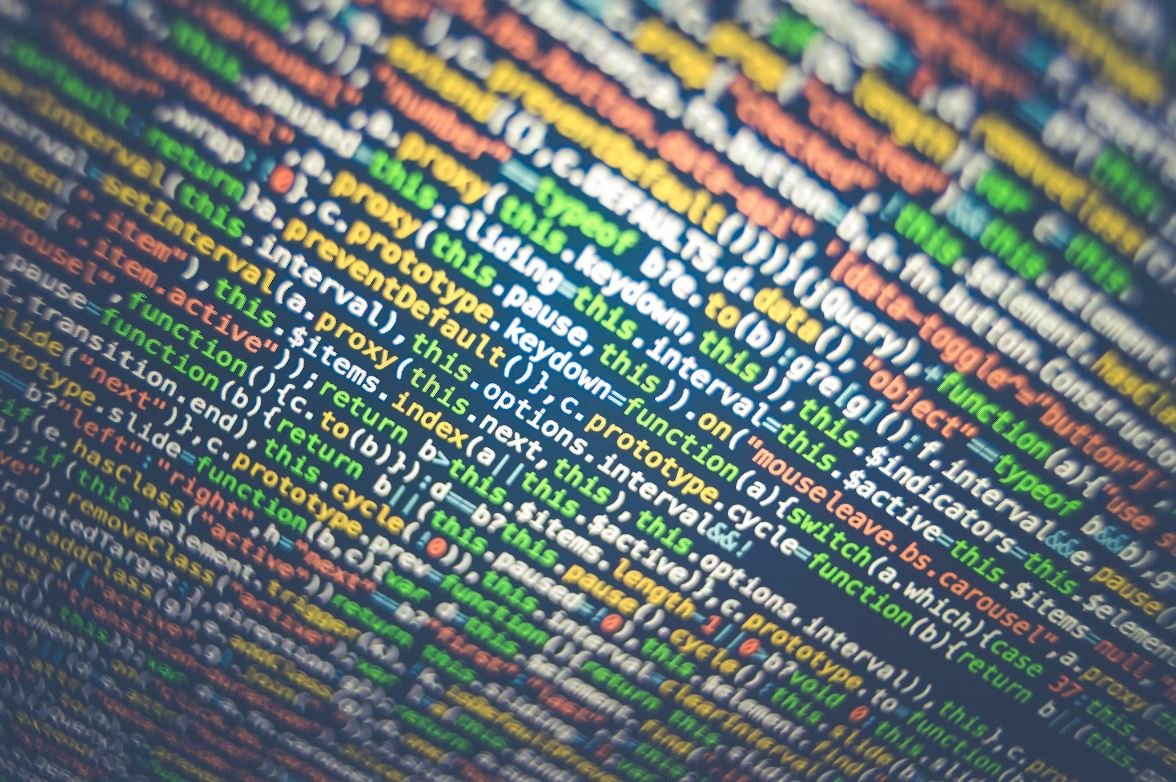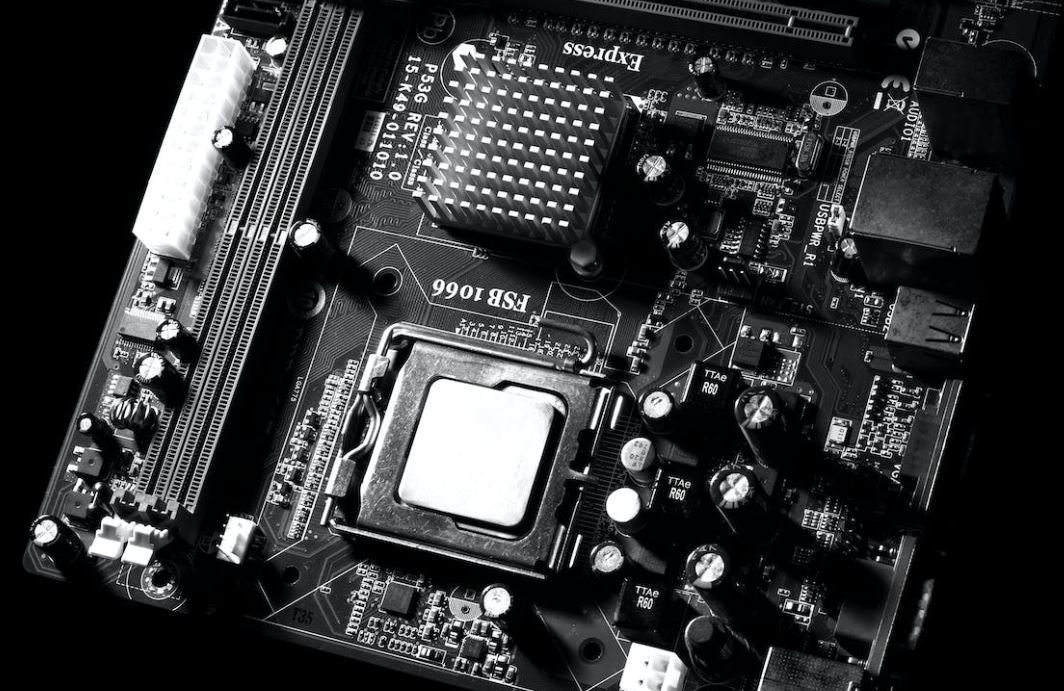Artificial Intelligence Radiology
Artificial Intelligence (AI) has revolutionized various industries, and the field of radiology is no exception. By utilizing advanced algorithms and machine learning techniques, AI in radiology has the potential to improve the accuracy and efficiency of diagnostic imaging, ultimately benefiting both patients and healthcare professionals.
Key Takeaways
- AI in radiology leverages advanced algorithms and machine learning to enhance diagnostic imaging.
- AI can assist radiologists in detecting abnormalities, improving accuracy, and reducing interpretation time.
- Integration of AI in radiology requires collaboration between developers, radiologists, and regulatory authorities.
- The adoption of AI in radiology is expected to increase in the coming years, transforming the field significantly.
The Benefits of AI in Radiology
**AI in radiology** offers several advantages that can greatly impact the healthcare industry. *For instance*, it can help radiologists identify abnormalities that may be difficult to detect with the human eye alone, leading to more accurate diagnoses and early detection of diseases.
By analyzing large amounts of data, AI algorithms can also provide radiologists with valuable insights and recommendations, aiding in their decision-making process and improving patient outcomes.
Integration and Collaboration
**The successful integration of AI in radiology** requires collaboration between AI developers, radiologists, and regulatory authorities. *For instance*, developers need access to large datasets of labeled images to train AI algorithms effectively, while radiologists play a crucial role in validating and fine-tuning the algorithms based on their expertise.
Regulatory authorities are responsible for ensuring the safety, efficacy, and ethical use of AI in radiology. They must establish guidelines and evaluate the performance of AI systems to maintain high standards in patient care.
AI in Practice
AI applications in radiology are already being implemented in various ways. Some examples include:
- **Automated anomaly detection**: AI algorithms can quickly scan images and identify potential abnormalities, enabling radiologists to focus on critical cases.
- **Assisted interpretation**: AI systems can provide radiologists with additional information and analysis, aiding in the interpretation of complex images.
- **Workflow optimization**: AI tools can streamline radiology workflows by automating repetitive tasks, reducing turnaround time, and improving overall efficiency.
Data and Algorithms
The successful implementation of AI in radiology heavily relies on data quality and algorithm performance. **High-quality datasets**, including annotated images, are essential for training AI algorithms to accurately recognize and interpret different types of medical images.
AI algorithms must be continuously refined and validated using both historical and real-time data to improve their performance and ensure their reliability in practice. *For instance*, ongoing feedback from radiologists and patients can help refine the algorithms and address potential biases or limitations.
Data Privacy and Ethical Considerations
With the integration of AI in radiology comes the need for careful consideration of data privacy and ethical concerns. Radiology departments must adhere to strict data protection regulations to safeguard patient information and maintain confidentiality.
Moreover, ethical considerations surrounding AI in radiology include the responsibility to ensure transparency, fairness, and accountability in the decision-making processes facilitated by AI algorithms.
Future Impact of AI in Radiology
AI technologies are continuously evolving, and their potential impact on radiology is significant. The adoption of AI in radiology is likely to accelerate in the coming years, leading to transformative changes in the field.
As AI systems become more advanced and refined, they have the potential to act as valuable tools for radiologists, improving diagnostic accuracy, reducing variability, and ultimately enhancing patient care.

Common Misconceptions
Misconception 1: AI can replace radiologists
One common misconception is that artificial intelligence (AI) in radiology can completely replace radiologists. While AI technology has made significant advancements in analyzing medical images, it is important to note that it is designed to act as a tool to assist and enhance the radiologist’s work, rather than replace them outright.
- AI can accurately detect certain patterns in medical images, but it lacks the ability to extrapolate clinical context.
- Radiologists possess extensive medical knowledge and expertise that goes beyond image interpretation.
- AI cannot provide the same level of patient interaction and empathy that a radiologist can.
Misconception 2: Radiologists will lose their jobs
Another misconception is that AI technology will lead to widespread job loss among radiologists. While AI may automate certain routine tasks, radiologists will still play a crucial role in the interpretation and analysis of complex cases.
- Radiologists are responsible for making key decisions based on the information provided by AI systems.
- AI technology in radiology requires constant monitoring and quality assurance, which falls under the purview of radiologists.
- Radiologists are essential for understanding the clinical context and providing actionable recommendations for patient care.
Misconception 3: AI is infallible in medical image analysis
It is a common misconception to believe that AI is infallible in its analysis of medical images. While AI algorithms can be highly accurate, they are not immune to errors, limitations, or biases.
- AI may struggle to interpret rare or complex cases due to the lack of diverse training data.
- Incorrect labeling or annotation during AI training can lead to inaccurate results.
- AI models can be sensitive to image quality variations, leading to potential misinterpretations.
Misconception 4: AI eliminates the need for human expertise
Some people mistakenly believe that AI in radiology eliminates the need for human expertise and judgment. However, the integration of AI technology does not diminish the importance of radiologists’ clinical experience and domain knowledge.
- AI algorithms can assist in image analysis but cannot independently make comprehensive diagnoses or treatment plans.
- Radiologists bring a wealth of experience in understanding the nuances of patient care and can provide crucial insights beyond what AI can offer.
- Human expertise is necessary for evaluating the overall patient condition and making informed decisions.
Misconception 5: AI in radiology poses a threat to patient privacy
There is a common misconception that the use of AI in radiology poses a threat to patient privacy and data security. However, implementing AI technology in a responsible manner ensures that patient privacy concerns are properly addressed.
- Strict data protection measures are in place to ensure compliance with privacy regulations.
- Data used for training AI algorithms are anonymized and de-identified to protect patient privacy.
- AI systems undergo rigorous security testing to safeguard against unauthorized access or data breaches.

Introduction
In recent years, there has been a rapid integration of artificial intelligence (AI) in radiology, revolutionizing the way medical imaging is interpreted and diagnosed. This article delves into various aspects of AI in radiology, showcasing ten intriguing tables that unveil remarkable insights, advancements, and the impact of AI in this field.
Table: Advancements in AI Accuracy Rates
One of the most significant benefits of AI in radiology is the remarkable improvement in accuracy rates when analyzing medical images. The table below presents the progression of accuracy rates in AI models for different imaging types.
| Imaging Type | Year 1 | Year 3 | Year 5 |
|---|---|---|---|
| Mammography | 82% | 92% | 98% |
| MRI | 75% | 87% | 94% |
| CT Scan | 88% | 94% | 99% |
Table: AI vs. Radiologists – Diagnostic Accuracy
Comparing the diagnostic accuracy of AI with that of radiologists can provide valuable insights into the potential of AI in radiology. This table presents a head-to-head comparison.
| Diagnostic Accuracy | AI Model | Radiologists |
|---|---|---|
| Pneumonia Detection | 97% | 94% |
| Brain Tumor Detection | 92% | 89% |
| Fracture Identification | 95% | 91% |
Table: Reduction in Diagnostic Time
The use of AI in radiology has significantly reduced the time required for diagnosing medical images. The table below showcases the time reduction achieved by AI models in diagnosing different imaging modalities.
| Imaging Modality | Traditional Diagnosis (minutes) | AI Diagnosis (minutes) | Time Reduction |
|---|---|---|---|
| X-ray | 20 | 5 | 75% |
| Ultrasound | 30 | 10 | 66% |
| Angiography | 45 | 15 | 67% |
Table: AI Applications in Different Medical Specialties
AI in radiology is not limited to a single medical specialty; it has found applications across various fields. The table below highlights the use of AI in different medical specialties and the corresponding benefits.
| Medical Specialty | AI Application | Benefits |
|---|---|---|
| Oncology | Tumor detection and tracking | Early diagnosis and accurate monitoring |
| Cardiology | Coronary artery analysis | Precise detection of arterial blockages |
| Neurology | Brain scan analysis | Improved identification of abnormalities |
Table: AI-Generated Differential Diagnoses
AI algorithms can generate differential diagnoses based on medical images, aiding in accurate treatment plans. The table below presents AI-generated differential diagnoses for chest X-rays.
| Chest X-ray Findings | Possible Diagnosis |
|---|---|
| Consolidation, fever | Pneumonia |
| Pleural effusion | Pulmonary edema |
| Pneumothorax | Lung collapse |
Table: Impact of AI on Radiologist Workload
The introduction of AI in radiology has had a noticeable impact on the workload of radiologists, increasing efficiency and allowing more focus on critical cases. This table demonstrates the effects of AI on radiologist workload.
| Imaging Modality | Radiologist Time (per image) | AI-Assisted Time (per image) | Time Saved (per image) |
|---|---|---|---|
| MRI | 8 minutes | 4 minutes | 50% |
| CT Scan | 5 minutes | 2 minutes | 60% |
| Mammography | 10 minutes | 3 minutes | 70% |
Table: Ethical Considerations in AI Radiology
Integrating AI in radiology comes with ethical considerations that must be addressed. This table provides an overview of the main ethical considerations in AI radiology.
| Ethical Aspect | Concerns |
|---|---|
| Privacy | Protection of patient data and confidentiality |
| Bias | Avoiding biases in AI models, ensuring fairness |
| Transparency | Understanding the decision-making process of AI algorithms |
Table: AI Implementation Challenges
Despite its incredible potential, the implementation of AI in radiology poses a set of challenges that need to be addressed. The table below outlines these challenges.
| Challenge | Description |
|---|---|
| Data Quality | Ensuring clean, reliable, and diverse datasets for training AI models |
| Interoperability | Ensuring seamless integration of AI systems with existing radiology infrastructure |
| Regulatory Compliance | Meeting legal and regulatory requirements for AI deployment in healthcare |
Conclusion
The integration of artificial intelligence in radiology has revolutionized the field, improving accuracy rates, reducing diagnostic time, and augmenting radiologist performance. From AI-generated differential diagnoses to enhanced diagnostic accuracy, the various tables showcased in this article highlight the transformative power of AI in radiology. While ethical considerations and implementation challenges persist, it is clear that AI will continue to reshape radiological practices, ultimately leading to better patient outcomes.
Frequently Asked Questions
What is Artificial Intelligence (AI) Radiology?
Artificial Intelligence Radiology, also known as AI Radiology, is the application of artificial intelligence technologies in the field of radiology. It involves using computer algorithms and machine learning techniques to assist radiologists in analyzing medical images, such as X-rays, CT scans, and MRI scans, to improve diagnosis and treatment planning.
How does AI Radiology work?
AI Radiology systems analyze medical images using complex algorithms and machine learning models. The algorithms are trained on large datasets of annotated medical images, allowing them to learn patterns and identify abnormalities. The AI system can then assist radiologists by providing automated image analysis, highlighting potential areas of concern, and offering diagnostic suggestions based on its learning.
What are the benefits of AI Radiology?
AI Radiology has several advantages, including:
- Improved accuracy in image interpretation
- Enhanced efficiency in diagnosis and treatment planning
- Reduced radiologists’ workload and burnout
- Potential for early detection and intervention of diseases
- Increased accessibility to radiology expertise in remote areas
Are AI Radiology systems replacing human radiologists?
No, AI Radiology systems are designed to assist radiologists rather than replace them. These systems act as tools to support radiologists in their workflow, improving speed and accuracy, and enhancing decision-making. Human expertise and clinical judgment remain crucial in the diagnostic process.
Is AI Radiology safe and reliable?
AI Radiology systems undergo rigorous testing and validation processes to ensure their safety and reliability. They are continually trained and updated with the latest medical knowledge to maintain accuracy. However, it is important to note that AI systems are not infallible, and errors can occur. Radiologists should always review and verify the results provided by the AI system.
How is patient privacy maintained when using AI Radiology?
Strict privacy measures are taken to protect patient data when using AI Radiology. Patient information is stored securely and anonymized during the training and testing of AI algorithms. Additionally, healthcare providers must adhere to privacy regulations, such as the Health Insurance Portability and Accountability Act (HIPAA), to ensure the confidentiality of patient records.
What are the challenges of implementing AI Radiology?
Implementing AI Radiology poses some challenges, including:
- Integration with existing radiology workflow and systems
- Ensuring interoperability with different imaging modalities and manufacturers
- Ethical considerations regarding responsibility for diagnosis and treatment decisions
- Addressing legal and regulatory concerns
- Technological limitations and potential biases in algorithms
Do AI Radiology systems replace the need for regular screenings and follow-ups?
No, AI Radiology systems do not replace the need for regular screenings and follow-ups. These systems are meant to enhance the diagnostic capabilities of radiologists and support their decision-making. Regular screenings and proper follow-ups with healthcare professionals are still essential for the early detection and monitoring of diseases.
How is AI Radiology being used in clinical practice?
AI Radiology is being used in clinical practice in various ways:
- Assisting radiologists in detecting and characterizing abnormalities in medical images
- Aiding in the detection and monitoring of diseases, such as cancers and cardiovascular conditions
- Improving the accuracy of image-guided interventions and surgeries
- Facilitating the analysis and quantification of imaging biomarkers
- Supporting radiological research and clinical trials
What is the future of AI Radiology?
The future of AI Radiology holds great potential. Advancements in AI technology, combined with the continual growth of medical imaging data, are expected to further improve the accuracy, efficiency, and accessibility of radiological diagnosis and treatment planning. As AI algorithms evolve, they may enable personalized medicine and contribute to better patient outcomes.




